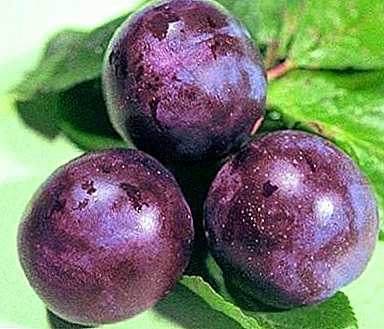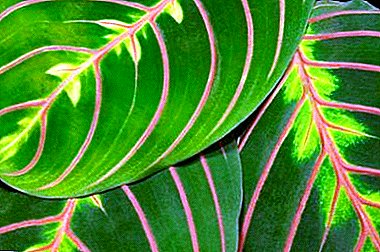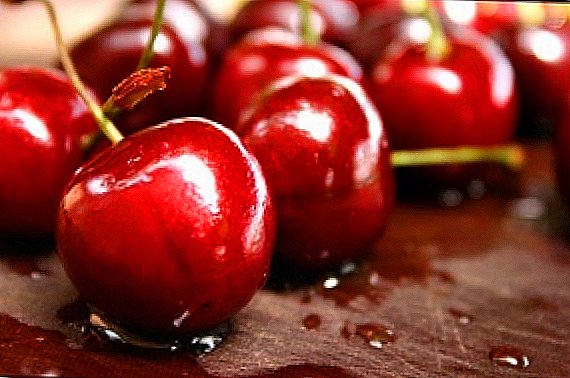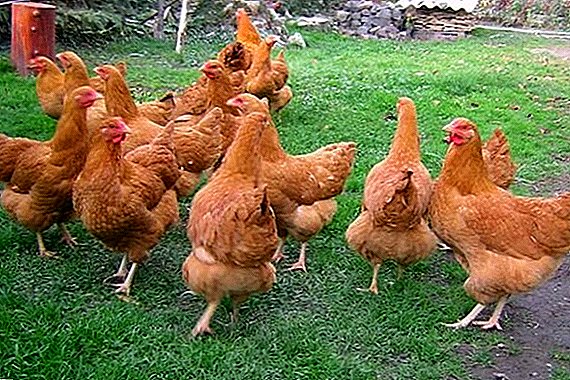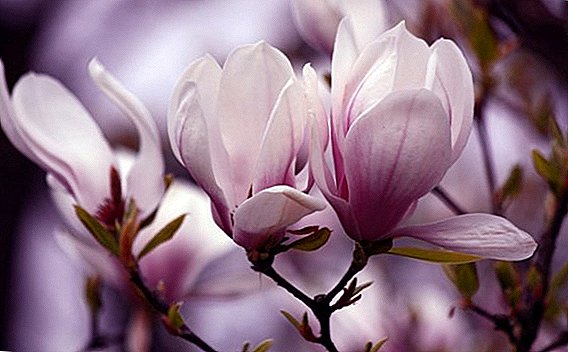 In the southern regions grows an amazingly beautiful plant - Magnolia Sulange. It can be found in all countries with a warm climate. Her beautiful bloom fascinates and remains in memory as one of the most beautiful spectacles. Magnolias are successfully grown in botanical gardens on their own plots not only in the southern strip, but also in the middle. The decorative qualities of the plant make it desirable.
In the southern regions grows an amazingly beautiful plant - Magnolia Sulange. It can be found in all countries with a warm climate. Her beautiful bloom fascinates and remains in memory as one of the most beautiful spectacles. Magnolias are successfully grown in botanical gardens on their own plots not only in the southern strip, but also in the middle. The decorative qualities of the plant make it desirable.
This article will provide information about what Magnolia Sulange requires conditions, how to plant and care for this unusually beautiful tree.
Magnolia Sulanzha: description
Magnolia Sulange - This is a deciduous low tree or shrub with very beautiful flowers that grows on fertile soils. The plant reaches a height of 2 to 8 meters, has a rounded crown. Branches begin to appear at the very ground. Magnolia leaves are large and have a light green color. Bottom they are pubescent, and their upper part is smooth.
Did you know? Magnolias growing in nature of some species in height can reach 30-50 meters.
 The most important decoration of a plant is its flowers. They are cupped, large - reach 8-25 cm. Their color can be white, red, purple or two-color - white-pink. Magnolia flowering period begins in April-May, and fruiting - in September-October. When the magnolia begins to bloom, most trees still do not even have leaves, however, like her own.
The most important decoration of a plant is its flowers. They are cupped, large - reach 8-25 cm. Their color can be white, red, purple or two-color - white-pink. Magnolia flowering period begins in April-May, and fruiting - in September-October. When the magnolia begins to bloom, most trees still do not even have leaves, however, like her own.
Immediately after planting, only single flowers appear on the tree, which bloom for a short time. Over the years, the flowers will become more and their flowering period will also increase - up to 30 days.
With age, magnolia increases not only the abundance of flowering, its duration, but also winter hardiness. Also, the plant is resistant to industrial emissions, air pollution, exhaust gases - that is, it will feel great in urban environments.
How to plant a magnolia
 Amateur gardeners rarely plant magnolias on their sites. Many believe that this plant is very gentle, and will not survive the winter in our area. But you can safely plant a magnolia in your garden, if you choose the right place for it and fulfill the requirements for soil and care.
Amateur gardeners rarely plant magnolias on their sites. Many believe that this plant is very gentle, and will not survive the winter in our area. But you can safely plant a magnolia in your garden, if you choose the right place for it and fulfill the requirements for soil and care.
How to plant Magnolia Sulanzha, what are the features to successfully grow this tree - these questions are required to study so that the tree grew strong and pleased with its decorative beauty.
Magnolia is unpretentious, but there are some rules to its landing. The seedling is better to choose with flower buds. The period when planting Magnolia Sulange with a closed root system in the ground, lasts from early spring until late autumn. Such cultures more easily tolerate the stress of transplanting into open ground, because they will be planted with a clod of earth to which they are accustomed.
It is recommended to plant a magnolia in the fall, in the dormant period of the plant. If a tree is planted in spring, it is actively drawn out and makes shoots that do not have time to become stiff by winter and therefore can die off in winter.
How to choose a landing site
 First of all, it is necessary to find out if there is a suitable place for magnolia Sulange in the garden or on the plot. The plant should be covered from the scorching rays of the sun and protected from the wind. The penumbra is well suited for this shrub or tree. The morning sun is not scary for a magnolia, and the rest of the time it should be in the shade because of its sensitivity to the bright midday sun. With age, the magnolia becomes not so sensitive to sunlight.
First of all, it is necessary to find out if there is a suitable place for magnolia Sulange in the garden or on the plot. The plant should be covered from the scorching rays of the sun and protected from the wind. The penumbra is well suited for this shrub or tree. The morning sun is not scary for a magnolia, and the rest of the time it should be in the shade because of its sensitivity to the bright midday sun. With age, the magnolia becomes not so sensitive to sunlight.
Important! It is estimated that 90% of the success of growing Magnolia Sulange belongs to the correct choice of landing site.
Magnolia Sulange poorly tolerates transplants, so the place for her should be chosen deliberately.
In terms of landscape design, magnolia should grow separately from other fruit and ornamental plants. So her beauty will be brighter emphasized. Against the background of coniferous trees, magnolia will look good.
If magnolias comfortably grow on the place chosen by the gardener, over the years it will grow into a spreading tree. The crown in diameter can reach 5-10 m.
Pit preparation and soil requirements
 The landing pit for Magnolia seedling Sulange should be quite spacious. In diameter, it should be 2 times larger than the diameter of the root system of a plant. At the bottom of the dug hole you need to put the soil mixture of peat or compost, deciduous or sod land and sand. Soils for the mixture are taken in the ratio of 2: 1: 0.5.
The landing pit for Magnolia seedling Sulange should be quite spacious. In diameter, it should be 2 times larger than the diameter of the root system of a plant. At the bottom of the dug hole you need to put the soil mixture of peat or compost, deciduous or sod land and sand. Soils for the mixture are taken in the ratio of 2: 1: 0.5.
Important! Magnolia does not like calcareous soils, she prefers an acidic environment.
Features landing Magnolia Sulanzha
Since the root system of Magnolia Sulange is superficial, it is necessary to carefully monitor that the upper layer of the earth is always moderately moist and not dry. A comfortable microclimate can be provided by mulching with bark of coniferous trees or straw.
It is better for planting to choose a tree grown in a container, since it can be planted with a clod of earth. Thanks to this step, the tree adapts faster to the new place.
How to grow magnolia Sulanzha in the garden, the rules of plant care
There are some rules how to care for Magnolia Sulange, so that she pleased with her decorative beauty, and did not need to take measures to save her.
Watering and feeding magnolia
In the dry summer magnolia should be watered abundantly, but it does not overwet the soil. Water should not be too cold.
The plant needs additional feeding during the development of leaves and fruits. It is better to use a full range of mineral fertilizers, which contributes to a better development and reduces the detrimental effect of weather factors.
Important! Fertilizers can be applied only until July inclusive. In August, the plant enters a state of rest and prepares for wintering.
How to care for the soil
 The soil around the magnolia requires some care. To reduce the intensity of evaporation of moisture around the plant, the ground surface is mulched. Mulching is performed within a radius of 50 cm from the plant by the bark of coniferous trees or straw.
The soil around the magnolia requires some care. To reduce the intensity of evaporation of moisture around the plant, the ground surface is mulched. Mulching is performed within a radius of 50 cm from the plant by the bark of coniferous trees or straw.
A rake or a spade cannot be cultivated near the plant stem, since the plant has a shallow root system. For the same reason, over-drying of the soil is absolutely not allowed.
Features trimming magnolia Sulanzha
Magnolia Sulanzha does not need special pruning of the crown. Dry branches and frozen ovaries of flowers in winter can only be cut off after flowering has ended.
To improve the decorative appearance of magnolia, it is customary to cut off the branches growing inside the crown. It also has a good effect on its growth and development. Fresh slices need to be processed with garden pitch.
Magnolia Sulanzha and frost resistance
 Magnolia Sulanzha is a relatively winter-hardy form, so it can grow in the middle climatic zone. In severe frosts, flower buds can freeze, but the tree itself does not suffer.
Magnolia Sulanzha is a relatively winter-hardy form, so it can grow in the middle climatic zone. In severe frosts, flower buds can freeze, but the tree itself does not suffer.
In the first 2-3 years after planting is required to cover the plant for the winter. How to cover magnolia for the winter, is a protection of the root system and the lower part of the trunk from frost. For this purpose, straw and spruce are used.
Did you know? Thaws in the winter are a particular hazard to magnolias. Flower buds may begin to wake up, and the subsequent sudden frost will destroy them.
Resistance of Magnolia Sulange to pests and diseases
Magnolia Sulanzha - a plant, steady against diseases and wreckers. She does not attract the attention of garden pests and practically does not get sick.
But still there are some problems. Yellowing the leaves of a plant may indicate a lack of iron in the soil. In this case, the soil under the plant must be watered, and its leaves sprayed with a solution of iron chelate.
Also, yellow leaves may indicate a disease of chlorosis. The veins of the leaves remain green. Appears when there is too much lime in the soil, so you need to add peat, which is a favorable acidic medium for magnolias. Also suitable land from coniferous forests and drugs that increase acidity.
 In hot weather, a spider mite may appear. He sucks the sap of the plant, attaching to the bottom of the leaves. Magnolias these pests can cause significant damage, as the plant is greatly weakened.
In hot weather, a spider mite may appear. He sucks the sap of the plant, attaching to the bottom of the leaves. Magnolias these pests can cause significant damage, as the plant is greatly weakened.
Also among the pests can be rodents that gnaw the roots of the plant. This becomes apparent only when removing the top layer of soil. If damage to the roots is found, the wounds should be treated with a 1% solution of basezol. Therefore, it is customary to cover the soil around the magnolia, when the upper layer of the earth is already freezing, then the rodents will not get to the roots.
Magnolia breeding methods of Sulanzha
There are several ways of breeding Magnolia Sulange. They can be propagated by seed or vegetatively - cuttings, layering, inoculation.
Under natural conditions, magnolias propagate by seed. Shrub specimens can multiply by layering - branches bend down to the ground with falling leaves and root.
 The seeds of the plant are cleaned from their outer shell and sown in boxes. Boxes set in a cool place - on the loggia, in the cellar. The temperature should not fall below 3 ° C. The soil with seeds should be regularly moistened, and after 5 months the first shoots appear. The first year seedlings develop slowly.
The seeds of the plant are cleaned from their outer shell and sown in boxes. Boxes set in a cool place - on the loggia, in the cellar. The temperature should not fall below 3 ° C. The soil with seeds should be regularly moistened, and after 5 months the first shoots appear. The first year seedlings develop slowly.
Gardeners prefer to carry out cuttings of Magnolia Sulanja, because with such reproduction the plant enters the flowering phase faster than the specimens grown from seeds. Vegetative reproduction allows you to save the signs and properties of the plant form.
It is necessary to choose the cuttings of two-year shoots. In the summer, green cuttings are cut from the mother plant and rooted in mini-greenhouses. Bottom suit heated soil to stimulate the appearance of roots.
Magnolia Sulange is very adapted to the climate of the southern and middle bands. Therefore, do not be too patronize her. This plant is unpretentious, resistant to disease and easy to grow.


